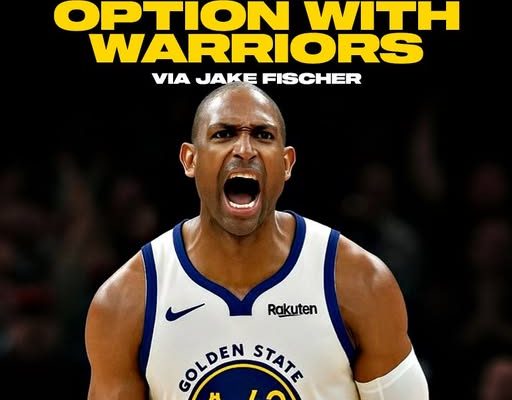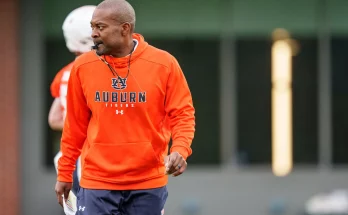Al Horford Expected to Sign with Warriors with Player Option, But Both Sides Waiting on Jonathan Kuminga’s Situation
Al Horford’s NBA future is inching closer to a reunion with the Golden State Warriors, but his next move could ultimately depend on a key roster decision involving Jonathan Kuminga. According to basketball insider Jake Fischer, Horford is anticipated to sign a contract with the Warriors that includes a player option—a clause that will give the veteran forward flexibility after the first season. However, the deal remains on pause as both Horford and the Warriors wait to see what happens with Kuminga, whose evolving role and status with the team could affect the final roster composition and playing time distribution.
This behind-the-scenes tug-of-war highlights the intricacies of NBA free agency and roster management in the modern era. Teams often need to balance veteran acquisitions with the development of younger players, all while navigating salary cap restrictions and strategic long-term planning. The Warriors are no exception, and this cautious approach to Horford’s signing shows the careful thought going into how they build a championship-caliber team for 2025 and beyond.
Al Horford is one of the league’s most respected veterans. At 37 years old, he may no longer be the athletic dynamo of his prime, but his value lies far beyond pure physicality. Horford’s basketball IQ, versatility on defense, and ability to stretch the floor on offense remain vital assets for teams looking to add experience and stability. His steady leadership and playoff know-how make him a particularly appealing fit for Golden State, a team still anchored by their core superstars Stephen Curry, Klay Thompson, and Draymond Green, who rely heavily on smart spacing and defensive adaptability.
The player option in Horford’s contract is a critical feature. It provides him with the ability to reassess his situation after one season with the Warriors, deciding whether to continue for a second year or opt out to explore other opportunities. This flexibility is valuable for a veteran player considering how much playing time and role he might expect, especially as he navigates the twilight of his career. For Golden State, the player option limits long-term risk, giving them control to evaluate how well Horford fits with their roster and team culture before making a bigger commitment.
The fact that both parties are waiting on Jonathan Kuminga’s status reveals the interconnected nature of roster moves. Kuminga, a dynamic young forward still on his rookie deal, is a promising talent with plenty of upside, but his exact role remains in flux. The Warriors’ front office and coaching staff are assessing how to best integrate him with veterans like Horford without limiting either player’s impact. If Kuminga’s situation shifts—whether through a trade, contract restructuring, or a change in minutes allocation—it could open up room for Horford to sign comfortably and carve out his role on the team.
This waiting game reflects the delicate balancing act Golden State faces. On one hand, they want to add Horford’s wealth of experience and skill set to their frontcourt. On the other, they must nurture Kuminga’s growth as a key piece of their future. Neither player’s potential should be compromised. Thus, timing and roster flexibility are everything. The Warriors have been meticulous architects of success in recent years, often blending seasoned veterans with young stars to maintain their status as title contenders. Adding Horford fits their model—but only if it doesn’t stall Kuminga’s development.
Horford himself benefits from this arrangement. The player option grants him agency over his career trajectory and ensures he doesn’t get locked into a contract that might not match his desires after a season of evaluating fit, playing time, and team performance. If the Warriors prove to be a good environment for him, he can stay; if not, he has an escape hatch. This mutual flexibility underlines how modern NBA contracts increasingly favor adaptability for both teams and players.
The Golden State Warriors have long been a franchise that values savvy roster management. Their core stars have remained relevant for years, largely because the team has surrounded them with smart complementary players. Horford is a perfect example of that. He is not a superstar anymore, but he brings balance and intelligence. His ability to defend multiple positions, shoot from the perimeter, and make high-IQ passes fits well with Steve Kerr’s coaching philosophy, which prioritizes ball movement, spacing, and defensive switching.
Defensively, Horford’s versatility stands out. In an era where teams use positionless lineups and demand their big men to switch onto guards and wings, Horford is invaluable. He has the length and awareness to contest shots, protect the rim when needed, and guard pick-and-roll coverages effectively. This adaptability allows the Warriors to mix and match lineups without losing defensive integrity.
Offensively, Horford’s presence helps stretch defenses. His mid-range shooting and ability to hit occasional threes pull opposing big men away from the basket, creating driving lanes for Curry and Thompson. His passing out of the post also enhances Golden State’s fluid offense, which relies on quick decisions and spacing.
Jonathan Kuminga, meanwhile, symbolizes Golden State’s future. The athletic forward has shown flashes of brilliance but is still developing consistency. How the Warriors manage his minutes and role alongside veterans like Horford will be a key storyline moving forward. Ideally, Kuminga continues to grow while Horford provides steady minutes and mentorship, striking a balance that benefits the whole team.
This kind of roster management also reflects the complex financial landscape of the NBA. Salary cap restrictions and luxury tax considerations mean teams must be precise in their spending. Signing Horford to a two-year deal with a player option likely represents a relatively modest financial commitment for Golden State, ensuring they maintain flexibility for future signings or contract extensions with key players.
Meanwhile, the player option’s presence on Horford’s deal is also indicative of a broader trend in the league, where contracts increasingly include built-in flexibility for both parties. This helps mitigate risk and allows players to keep their options open in an unpredictable environment, especially for veterans nearing the end of their careers.
From a fan perspective, this situation creates anticipation and a little uncertainty. Warriors supporters recognize Horford’s value and are excited about what he could bring to the team. At the same time, they want to see Kuminga continue his upward trajectory, making the timing of these decisions crucial. The way Golden State navigates this roster puzzle could have significant implications for their chances in the highly competitive Western Conference.
As the offseason unfolds, all eyes will be on how this deal progresses. Will Kuminga’s future be settled soon enough for Horford to sign and start integrating into the team? Will the Warriors find creative ways to maximize both players’ contributions? These questions will be answered in the coming weeks.
If Horford does sign with the Warriors, it would mark another chapter in his long and successful career. His veteran presence, combined with Golden State’s championship culture and talented roster, offers him a chance to compete at the highest level while also playing a mentoring role. For the Warriors, adding Horford would strengthen their depth and add another proven piece to their quest for a title.
Ultimately, this situation exemplifies the careful planning and negotiation that go on behind the scenes in the NBA. Deals aren’t just about money—they’re about fit, timing, role, and mutual goals. Golden State’s measured approach to signing Horford while waiting on Kuminga shows how serious they are about balancing their present championship window with the future.
As 2025 approaches, fans and analysts alike will be watching this storyline closely. The interplay between Horford’s player option, Kuminga’s status, and Golden State’s roster strategy could very well shape the trajectory of one of the league’s most exciting teams. If managed well, this could be a winning formula that extends the Warriors’ dominance and brings another championship parade to the Bay Area.
In the end, the key takeaway is that Horford’s next move isn’t just about a contract—it’s about timing, fit, and opportunity. With a player option giving him flexibility and the Warriors carefully considering their roster composition, this signing could be a perfect marriage of veteran savvy and youthful potential, setting the stage for another exciting chapter in Golden State basketball.



